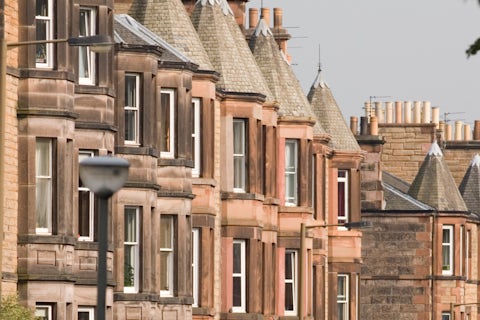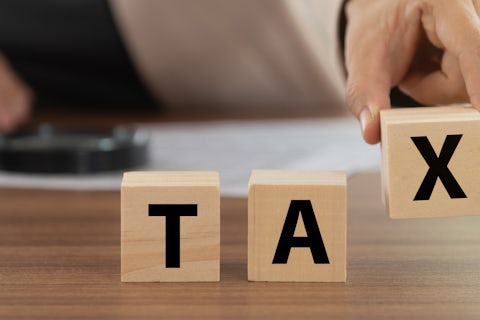 With the Chancellor’s autumn budget abolishing Stamp Duty for first time buyers buying property below £300,000, the Government is making a clear effort to ease the well documented pressure on first time buyers and falling levels of home ownership in the UK.
With the Chancellor’s autumn budget abolishing Stamp Duty for first time buyers buying property below £300,000, the Government is making a clear effort to ease the well documented pressure on first time buyers and falling levels of home ownership in the UK.
Unfortunately for those of us north of the border, as of April 2015 Stamp Duty Land Tax has been abolished in Scotland and replaced with Land and Buildings Transaction Tax. The Scottish Government has, so far, made no changes to this. Thus, prospective first time buyers in Scotland have seen no change to their ability to venture onto the property ladder. The Scottish Government has been under pressure to reduce rates of LBTT at the higher end of the market for a long time, and with the recent changes to Stamp Duty, there is now growing pressure to make changes to rates at the bottom end for first time buyers.
Prior to the changes made by the budget, a first time buyer buying a property in England for £300,000 would pay £5,000 in Stamp Duty whereas in Scotland they would pay £4,600 in LBTT. Now, first-time buyers will pay nothing in England and those in Scotland will still pay £4,600.
One fear arising from this may be that preferential taxation across England for first time buyers would encourage potential homeowners to purchase south of the border. However, it is worth acknowledging that Scotland is a very affordable place to buy property. In terms of property prices as a multiplier of annual salary, four of the ten most affordable UK districts for property are in Scotland: East Dunbartonshire, West Dunbartonshire, North Lanarkshire, and Stirling.
On top of this, the UK House Price Index states that, in October 2017, the average price paid by a first time buyer in England was £201,657, whereas in Scotland they paid £116,042. As such, it is clear that Scotland is well placed in terms of property affordability. With this in mind, it is also worth remembering that the average first-time buyer in Scotland pays no LBTT on their first property as the threshold is £145,000. With the majority of first time buyers paying no LBTT, if the changes to Stamp Duty were mirrored north of the border, the majority of first time buyers would see no benefit.
The Scottish Government is also an excellent source of help for first-time buyers trying to get onto the property ladder: through the Low-cost Initiative for First Time Buyers (LIFT) shared equity scheme.
Since 2007, LIFT has helped over 12,000 people buy a home, who may have been unable to do so without the scheme. LIFT comprises two separate initiatives (the New Supply Shared Equity scheme for new build properties, and the Open Market Shared Equity Scheme for properties on the open market) available to people on low to moderate incomes. Using LIFT, a first time buyer will pay for the majority share in the property they buy and the Scottish Government pays the rest in return for a security over the proportion that it has funded. When it comes to selling the property, the Government will receive that same percentage of the sale price.
For example, if you purchase your home for £100,000 and the Scottish Government funds £15,000 of this through LIFT, they will have a security over 15% of the property. If you later sell the property for £120,000, 15% of the sale price (£18,000) will be returned to the Scottish Government. You are also able to increase your stake in the property by buying out the Scottish Government’s proportion in your property.
Another common and easy way for first time buyers across the UK to help themselves onto the property ladder is by using first time buyer ISA incentives such as setting up a Help to Buy ISA. This is government backed and will add a further 25% to any money saved save up for a deposit, up to a maximum of £12,000. By saving with a Help to Buy ISA, first time buyers could receive up to £3,000 towards a deposit. On top of this, the scheme applies to each buyer, rather than the property. Therefore, if a couple are saving to buy their first home together, they could receive up to £6,000 towards their deposit.
If you are a prospective first time buyer and would like to hear about how Gilson Gray can help you get a foot on the property ladder then please get in touch with out new business team, now available 7 days a week, on 7days@gilsongray.co.uk.
[info]
For More Information Contact:
Debbie McCathie
Direct Dial: 0131 285 1805
Email: dmccathie@gilsongray.co.uk
Julian Scott
Direct Dial: 0131 285 1810
Email: jscott@gilsongray.co.uk
[/info]
The information and opinions contained in this blog are for information only. They are not intended to constitute advice and should not be relied upon or considered as a replacement for advice. Before acting on any of the information contained in this blog, please seek specific advice from Gilson Gray.








